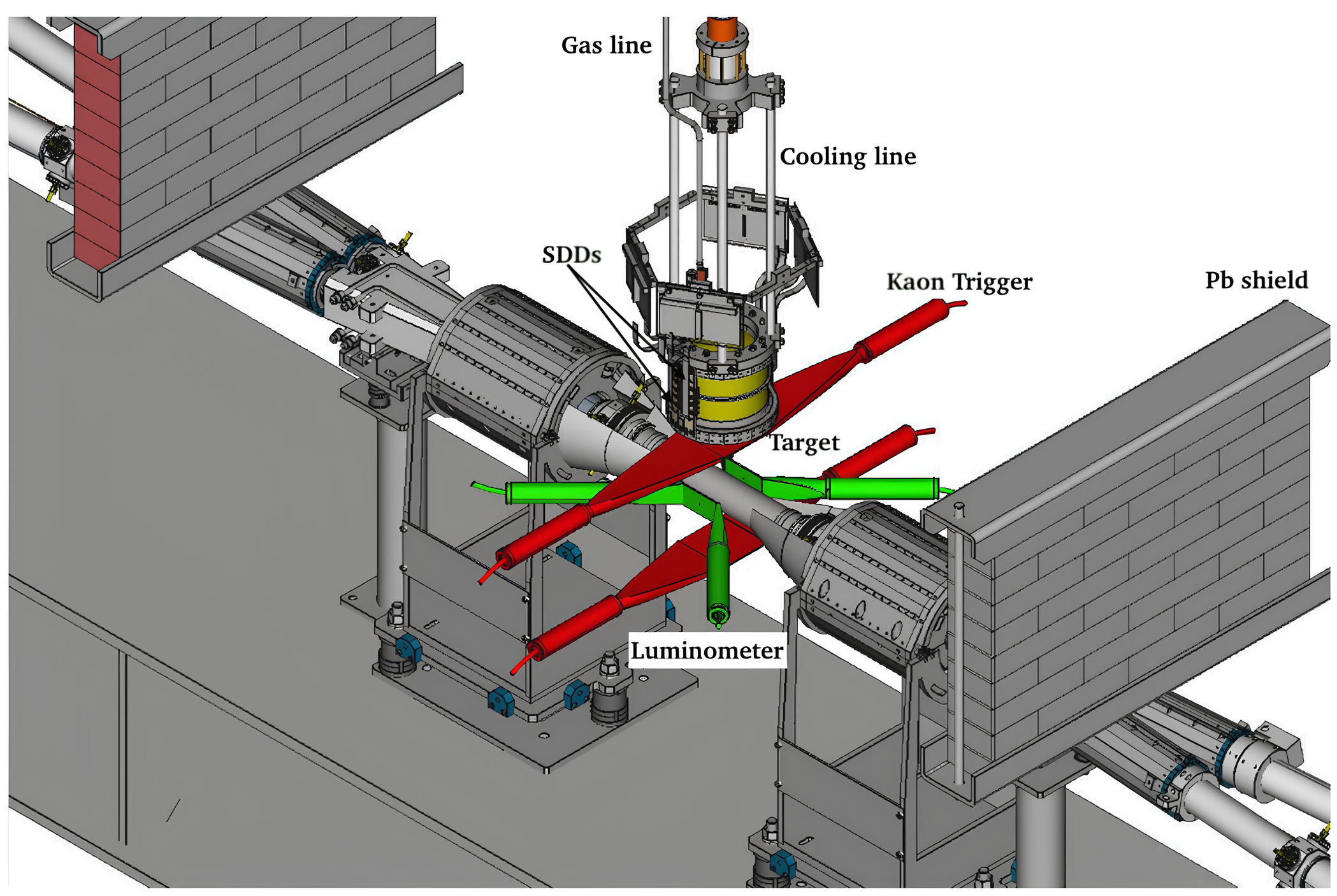SIDDHARTINO — goals and apparatus
The SIDDHARTINO experiment consists of a reduced version of the SIDDHARTA-2 apparatus, with 1/6 of the x-ray Silicon Drift Detectors (SDDs), and performed the measurement of the x-ray atomic transition to the 2p level in gaseous kaonic helium 4 (K4He) in a pilot run during the commissioning phase of the DAΦNE collider, in 2021 [1,2].
The aims of SIDDHARTINO were multiple:
- The optimization of the run conditions of the apparatus.
- Test and optimization of the trigger system, the VETO systems and SIDDHARTA-2 luminometer.
- First measurement and optimization of the collider luminosity.
- Test and optimization of the SDDs measurement performances, data selection and calibration procedure [3,4].
- Measurement of K4He transitions to the 2p atomic levels with high precision x-ray spectroscopy (SDDs). Fundamental information on the strong interaction with many-body systems can be retrieved from the measurement of such transitions [5,6]
- Optimization of the degrader used by the experiment to maximize the fraction of kaons stopped inside the gaseous helium target. This second step was performed by measuring kaonic helium-4 transitions on the 2p level, which has a much higher yield [5] than the kaonic deuterium expected one [6].
The SIDDHARTINO experiment performed the most precise measurement of K4He transitions in a gaseous target [1,2].
The SIDDHARTINO apparatus equipped 64 SDD detectors (384 SDDs are currently installed in SIDDHARTA-2). Other than that, the setup, the kaon trigger and VETO systems were the same installed in the SIDDHARTA-2 apparatus and described on the website at the SIDDHARTA-2 section. Further details can be found in the reference papers [7,8].

References
-
-
[1]. D. L. Sirghi et al., A new kaonic helium measurement in gas by SIDDHARTINO at the DAΦNE collider, J. Phys. G: Nucl. Part. Phys. 49, 055106 (2022).
-
[2]. D. L. Sirghi et al. , A New measurements of kaonic helium-4 L-series X-rays yields in gas with the SIDDHARTINO setup, Nucl. Phys. A 1029, 122567 (2023).
-
[3]. M. Miliucci et al., Silicon Drift Detectors’ Spectroscopic Response during the SIDDHARTA-2 Kaonic Helium Run at the DAΦNE Collider, Condens. Matter 6, 47 (2021).
-
[4]. F. Sgaramella et al., The SIDDHARTA-2 calibration method for high precision kaonic atoms x-ray spectroscopy measurements, Physica Scripta 97, 11 (2022).
-
[5]. C. Curceanu et al., The modern era of light kaonic atom experiments, Rev. Mod. Phys. 91, 025006 (2019).
-
[6]. M. Bazzi et al., L-series X-ray yields of kaonic 3He and 4He atoms in gaseous targets, Eur. Phys. J. A 50, 91 (2014).
-
[7]. L. De Paolis et al., Trigger rejection factor in the first kaonic helium run with the complete SIDDHARTA-2 setup, EPJ Web of Conferences 270, 00028 (2022).
-
[8]. M. Tuchler et al., Main Features of the SIDDHARTA-2 Apparatus for Kaonic Deuterium X-Ray Measurements, EPJ Web of Conferences 262, 01016 (2022).
-
